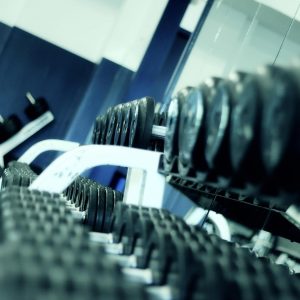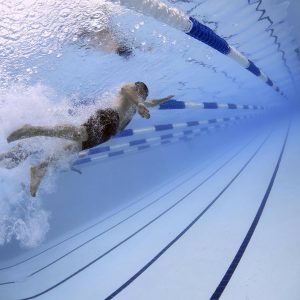COURSE STRUCTURE
There are 8 lessons as follows:
- Fitness & Wellbeing
- Fitness Physiology & Anatomy
- Management of Fitness Testing Services
- Designing Fitness Tests
- Resistance Training
- Developing an Exercise Program
- Managing an Exercise Program
- Leading a Fitness Program
AIMS
- Explain the relationship between fitness and wellbeing.
- Determine a person’s level of health and fitness according to physiological data.
- Manage fitness testing services to a standard practiced in gymnasiums and health clubs.
- Design Fitness Tests to a standard practiced in gymnasiums and health clubs.
- Explain the management of resistance training, including equipment and exercise programs.
- Develop an exercise program.
- Manage exercise programs, including monitoring and recommendations.
- Effectively lead a fitness program, to any number of people, including large groups or on an individual basis.
WHAT THE COURSE COVERS
- Explain symptoms of common problems that may occur during exercise, including: dizziness, hyperventilation, nausea or asthma.
- Describe procedures to follow in response to problems occurring during exercise
- Explain how to cater for special needs of the following different demographic groups during exercise:
- Pregnant women
- The elderly
- Paraplegics
- Describe examples of different people who experience poor health, but a good state of wellbeing.
- List physiological characteristics which can be used to indicate a persons health and fitness level.
- Describe the structure of skeletal muscle the upper arm.
- Compare anaerobic with aerobic energy systems.
- Explain how cardiovascular responses may vary, according to varying intensities of specific type of exercise.
- Explain the physiology of muscular fatigue related to varying levels of exercise.
- Explain factors related to hypertrophy/atrophy of muscle tissue, in a specific situation.
- Differentiate between a fitness assessment undertaken by a fitness leader and a comprehensive assessment of health carried out by a health practitioner.
- Explain the purpose, including limitations, of fitness testing in a summary.
- Complete a pre-test screening procedure to identify risk levels in a client, using a standard questionnaire.
- Explain procedures to manage legal liability when conducting fitness tests in your locality.
- Demonstrate a series of five different fitness tests, commonly used in health clubs or gymnasiums.
- Analyse the results of fitness tests conducted.
- Define in one sentence each, resistance training terminology, including:
- Repetitions
- Sets
- Resistance (load)
- Repetition maximum
- Rest
- Explain different resistance training concepts including:
- Overload principle
- Isotonic contraction
- Isometric contraction
- Eccentric contraction
- Isokenetic contraction
- Explain different resistance training methods, including:
- Isotonic programs
- Isometric programs
- Isokenetic programs
- Eccentric programs
- Compare different items of equipment commonly used for resistance training.
- Explain the proper use of five different resistance training machines; in accordance with manufacturer’s instructions.
- Identify hazards associated with use of different items of resistance training equipment.
- Develop guidelines for the care of weight training equipment.
- Compare the use of a specified weight machine by three different people in an analytical report.
- Prepare using illustrations, and step by step instructions, a modified exercise program.
- Explain the exercise program you developed.
- Explain different motivational techniques which are appropriate to use during, fitness instruction.
- Explain different counselling techniques which may be appropriate to use during fitness instruction.
- Explain an appropriate style of leadership to use during fitness instruction in a specified situation which you are familiar with.
- Explain the use of teaching principles to explaining a specific exercise technique.
- Explain differences in approach to leading different numbers of people in a fitness session.
- Demonstrate leading a fitness session with a group of four or more participants





